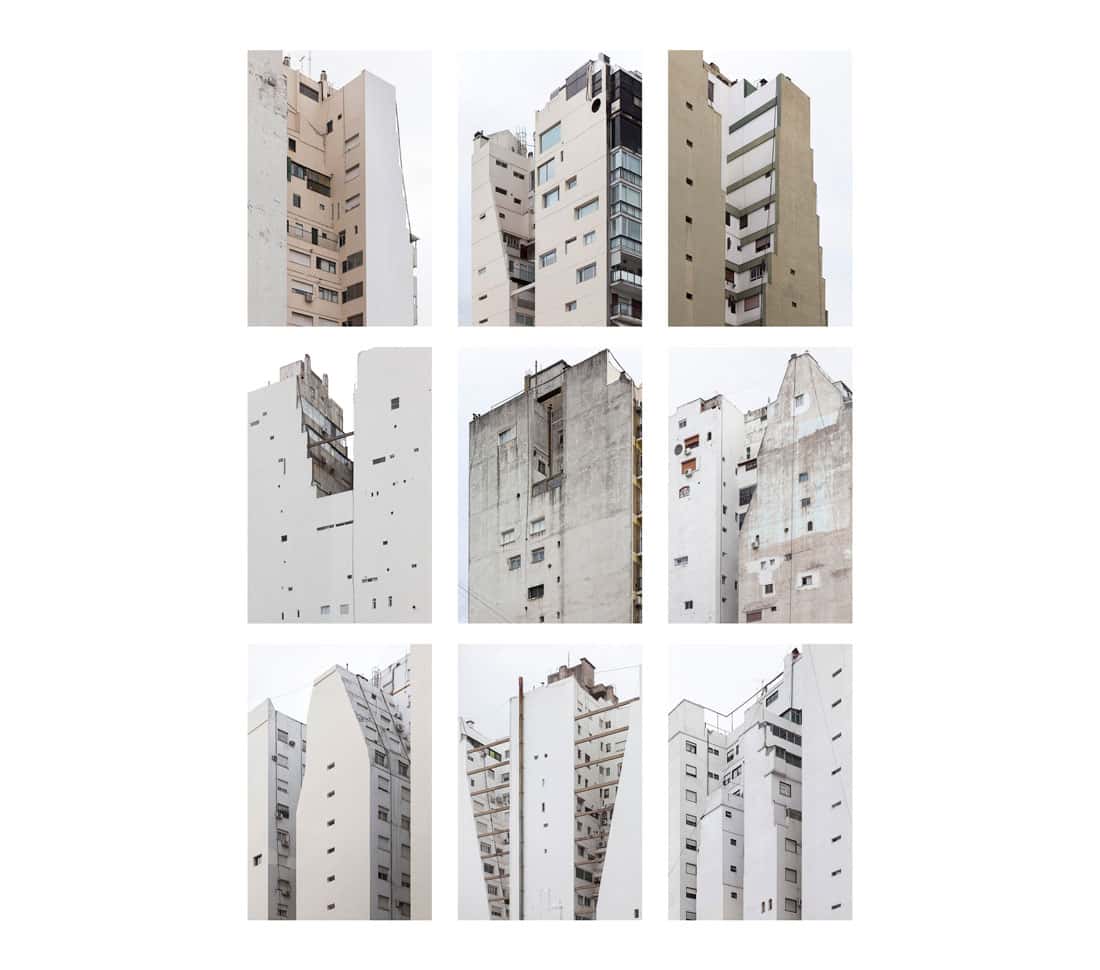Air and Light by Javier Agustín Rojas
The following photographs were displayed in the exhibition Towards an Agenda. Design in Action, curated by Martín Huberman at Fundación PROA from March 18 to June 9, 2019.
The “Air and Light Shaft” is an element devised in the first Building Code of Buenos Aires (1944) in order to guarantee the minimum necessary daylight and natural ventilation requirements of the internal spaces of a new building. Although the regulations and characteristics have evolved over time, Air and Light Shafts have always been determined by a series of common factors related to the plot of each building, such as its surface area, the width of the street, its location inside the city block and the plot’s zoning. The variation of forms, volumes, sizes and steps that are visible in these images come from the mathematical combination of these values. Where the development of the city is conceived through the maximum possible exploitation of its surface, the Air and Light Shafts present a void that responds exclusively to the form of the law.
These photographs are focused on how a norm – which is abstract, anonymous and immaterial – produces real, specific and domestic spaces. The images portray the individual modifications developed by the inhabitants of the buildings over time in order to maximize their living conditions, whether by enclosing a balcony, opening an illegitimate window in a party wall or painting something in a different color. In these interventions, the photographs highlight the specificity of each Air and Light Shaft as a space in conflict between the domestic and the urban spheres.

